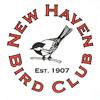Plum Island Off the Auction Block.
Conservationists have won the more than decade-long fight to stop the federal government’s sale of Plum Island, the Long Island Sound home of a government research facility 10 miles from Connecticut shores that, through years of security and isolation has also has become a pristine wildlife haven for the birds, seals, fish and other wildlife that frequent it. The measure ending the controversial plan to sell the island to the highest bidder was led by Connecticut and New York Congressional Delegates and was among the many items stuffed into the massive omnibus spending bill, signed at the end of December. Many decisions remain on the future use of the island; hopefully it will pass to the State of NY, where local officials are on board with plans to preserve its ecosystems. More information:
More Good News for L. I. Sound:
Also in late December Congressional leaders approved 30.4 million dollars for the 2022 Fiscal Year for the restoration and management of Long Island Sound through the National Estuary Program.
Tails and Greenway Funding via vanity license plates: write to support HB 5429
Most people don’t realize when they get a “Connecticut Greenways” vanity license plate their payment is not actually supporting the construction or maintenance of trails/greenways in Connecticut. Legislation introduced by Rep. Roland Lemar, HB 5429, a.k.a. the “bike bill,” would change that by creating a special “commemorative account” for trails and greenways funding, and dedicate Greenways plate fees for that purpose. The virtual public hearing on this legislation was held January 26, but it is not too late to write in support of the bill.
The “Preserve Long Island Sound” license plates in use since 2009 is the model for the Greenway Commemorative Account in HB 5429. Please write or call the office of Rep. Roland Lemar, Transportation Chair: 552 Chapel St., New Haven 06511; 203-903-5003; @rolandlemar
For More Birds in Your Life: Pollinator Recommendations for 2021:
Now is the time to make plans for the upcoming growing season and here are some pollinator-friendly suggestions to increase the presence of birds in your personal and community habitats.
1) eliminate pesticide use
2) plant native—flowers, grasses, trees, shrubs.
3) collect native seeds from your garden and share them
4) plan for continual blooms, fruits & seeds— spring, summer, fall and winter
5) leave leaf litter, stems & twigs to provide over-wintering habitat and food sources for birds
6) learn about invasives and how to root them out
7) identify the non-natives, even if not invasive, and find out what native species could replace them.
8) be part of the local H2H Pollinator Pathway as presented at our December meeting:
Pollinator-Pathway.org
The CT Blue Plan for Long Island Sound:
The plan as submitted to the General Assembly has been interrupted because of Covid but early in January things are moving again. The Blue Plan will serve as a tool to foster good decisions about proposed developments, including those that could impact seabirds and shorebirds. Detailed information about the plan and its progress can be followed at:
https://portal.ct.gov/DEEP/Coastal-Resources/LIS-Blue-Plan/Long-Island-Sound-Blue-Plan-Home#
The Blue Plan Map Viewer: “One of the most valuable portions of the Blue Plan’s bird section is a map that defines Ecologically Significant Areas. It identifies several near-shore sections from the western to the central Sound, and a large area across the waterway between the eastern Connecticut coast and the North Fork of Long Island as those that are the most important for vulnerable species such as Common, Least, and Roseate Tern, Saltmarsh Sparrow, and American Oystercatcher.” The DEEP site above includes the Map Viewer.
MBTA The Migratory Bird Treaty Act
Let’s not take anything for granted. In late December there was an unprecedented rollback of bird protections through the stripping away of critical protections in the Migratory Bird Protection Act. The MBTA has been solid Federal legislation since first passed in 1918. Now, when bird populations are at serious risk from long-term declines and climate change, we need to call on the new Congress and Interior Department leadership to reinstate the MBTA in full.
Forage Fish & Reauthorization of the Magnuson-Stevens Act
Tiny Fish Play a Big Role in the Ocean Ecosystem – and we should protect them accordingly! Tiny fish species, known as forage fish, serve as prey for larger fish, marine mammals, and seabirds. Unfortunately, not all forage fish are managed with their ecological role in mind.
The reauthorization of the MSA is on hold for now because of other responsibilities during covid, but the Forage Fish Coalition continues its work to learn more and provide the science for legislation that will protect fish, and thereby provide the essential nutrient-rich diets for our sea- and shore-birds.
Illustration generously provided by Patrick J. Lynch
Resources for learning more about forage fish:
http://fishbase.org/search.php for diets of fish. Smaller herring and menhaden eat different things than adults.
Atlantic States Marine Fisheries Commission
http://asmfc.org – gives life history of different fish species
